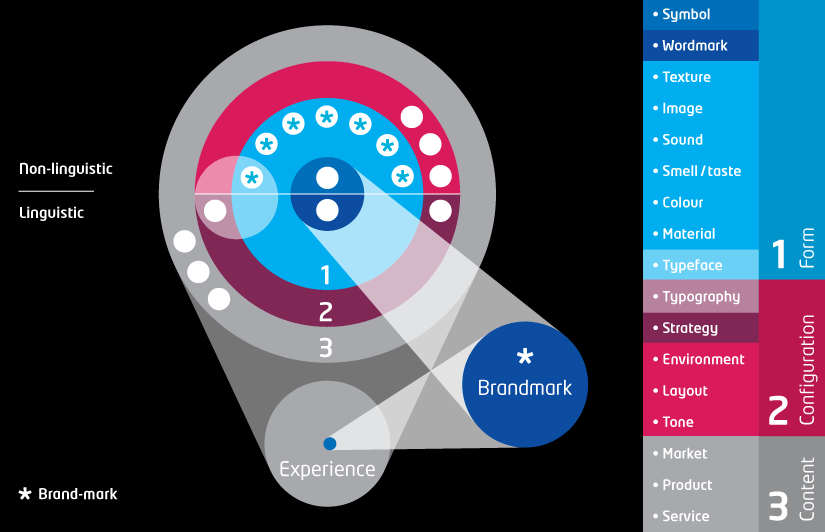|
|||||||||||||||
 | |||||||||||||||
The Anatomy of a brand identity model above captures all the major components of a brand identity. It marks out the range and type of components and also indicates the types of relationships the components have to each other. This model helps, for example, to identify the limits of the role of design in brand experiences by making a distinction between giving form to a brand and configuring a brand. From this model it can be discerned that design is primarily concerned with giving form to brands and that strategy is primarily concerned with configuring brands. And, that the content of a brand is mostly provided by products and services, and external market input not determined directly by the brand. The forming and configuring of a brand provides other types of content that provide substance to a brand but this is of secondary importance. Specifically, this model assists in understanding how configuring a brand relates to (and differs from) providing content for a brand and giving form to a brand. This model also handles the components of a brand identity as brand-marks to demonstrate how doing so is useful in terms of forming and configuring these marks. In this model are all the tangible types of marks of a brand that can be configured and formed to establish a brand identity. A more detailed full-scale black and white version of the Anatomy of a brand identity model can be downloaded from here. | |||||||||||||||
| | |||||||||||||||
|
Top |
| ||||||||||||||